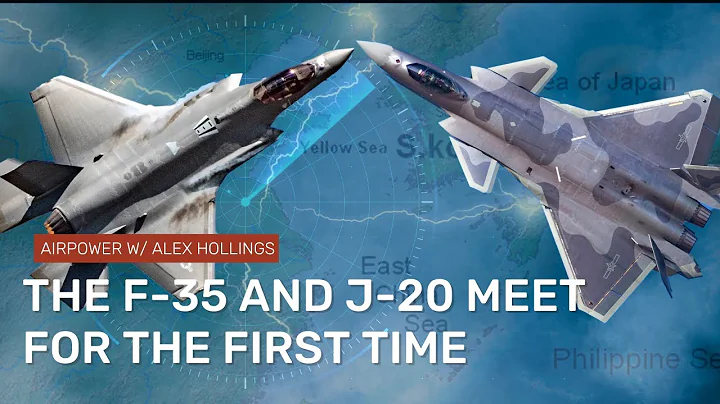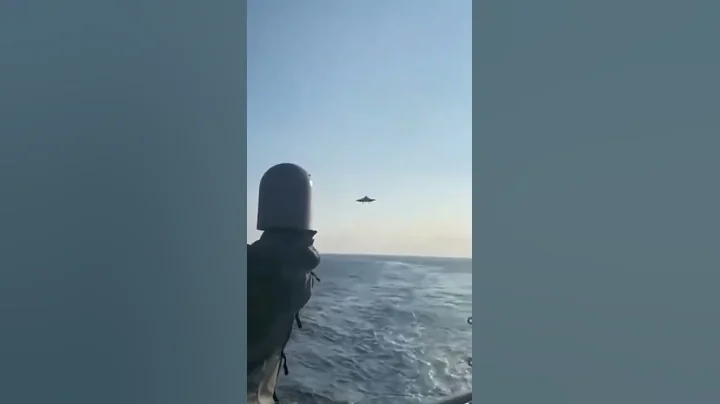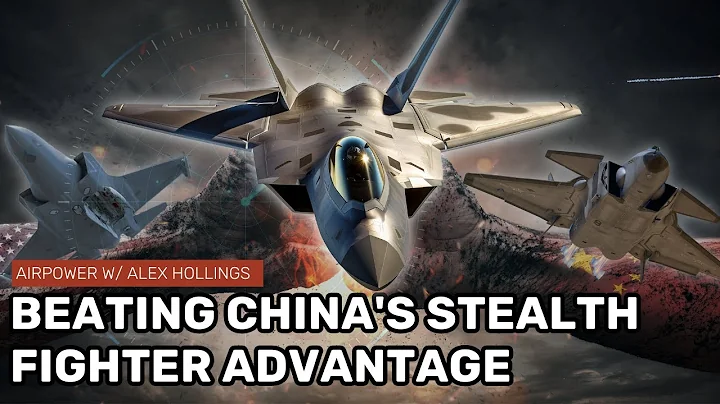Recently, the American media "Sandboxx News" produced a poster comparing the number of active stealth fighter jets in the world. The United States topped the list with more than 600 F-22A and F-35 aircraft, while China ranked second with more than 150 J-20 aircraft. Australia is surprisingly ranked third with 50 F-35As. In addition, this document originally only listed the top 10 countries with the number of stealth fighters in the world, but it very "intimately" stated that Russia currently has 16 Su-57s, ranking 11th in the world. The intention is self-explanatory. After this poster was sent back to China, the issue that public opinion paid most attention to was not the two types of US military stealth aircraft, nor the much-criticized Su-57. It was obviously the domestically produced J-20. To be more specific, it was the number of J-20s currently in service. and future production quantities.

Poster from "Sandboxx News"
In 2016, the J-20 successfully completed its five-year test flight and entered the small batch production stage. In 2018, after trials and adjustments by the troops, the complete J-20 was officially mass-produced. In September 2021, officials publicly stated that the J-20 has been equipped with a domestic engine (generally considered to be the Turbofan-10C), announcing that this heavy-duty stealth fighter will be fully domestically produced. At this point, the production of J-20 has entered a new stage. Theoretically, no other country can directly affect the production process and service scale of the J-20. It will only depend on the needs of the domestic fighter force and the production capacity of the manufacturer. Given that these two aspects are of great importance, it is rare for the outside world to get accurate information. Therefore, it is worth looking at the previous production speed of domestic fighter jets and foreign stealth fighters to estimate the production equipment of the J-20.

The latest J-20 has been equipped with domestically produced turbofans-10
On April 9, 1997, the first F-22 produced by Lockheed Martin officially rolled off the production line and became the world's first truly complete stealth fighter. On December 13, 2011, the last F-22A was delivered and entered the 525th Fighter Squadron of the 3rd Flying Wing of the U.S. Air Force. At this point, the order for 187 F-22As produced for the U.S. Air Force and National Guard has been completed. After deducting the test flight period of about 5 years, the F-22A has been actually produced for about 9 years, with an average of about 21 aircraft delivered per year. It should be noted that the number of "21" is not the normal rate for a mature aviation industry to produce advanced fighter jets. The F-15, the previous generation main fighter of the U.S. Air Force that entered service in the late 1970s, had an early mass production rate much higher than this. level.

The reason behind the first F-22
to roll off the production line is that at that time, the U.S. Navy had been negotiating with the U.S. Congress to try to maintain the total production of F-22A (the original plan was 750 aircraft), but at that time the U.S. Air Force was in a state of global invincibility. Therefore, the U.S. Congress insists on cutting spending on the F-22A project, and reducing production quantities is of course the simplest and most effective way. During the stalemate between the U.S. Air Force and the U.S. Congress, the changing numbers have repeatedly disrupted the production rhythm of the F-22A. The U.S. Air Force has also tried to extend the F-22A production time to wait for new variables. All of these have affected the delivery schedule of the F-22A, and it is quite helpless to produce an average of 21 aircraft per year.

The production quantity of F-22A has changed again and again
In fact, during the F-22 project planning stage, the pre-production plan was as follows: 6 second-batch trial production models were produced in 2000 (the first batch was a prototype aircraft), the third batch of 12 aircraft was produced in 2001 to verify the performance of the complete aircraft. This was increased to 20 aircraft in 2002, and further increased to 30 aircraft in 2003. Finally, the rate of 48 aircraft per year was maintained from 2004 until after 2020. Production ended and preparations were made for the production of next-generation fighter jets. Taking this as an example, it seems that 48 aircraft per year is the ideal production rate of heavy stealth fighter jets for the air forces of major powers. In view of the overall size of our country's fighter force and the level of threats it faces, which is similar to the Cold War situation faced by the U.S. Air Force when the F-22A was developed, the ideal annual production rate of the J-20 can be determined at 48 aircraft.

F-22A was originally created to deal with the Soviet Air Force.
The next question is whether AVIC can guarantee the production of J-20 at a rate of about 48 aircraft per year. Specifically, in order to ensure the smooth production of the F-22A, the U.S. aviation industry has mobilized more than 2,700 large and small companies to participate, and the total number of participants has remained at around 95,000.In the early production of F-22A, it took 35,000 working hours just to apply the surface stealth coating. Such a complex production model not only enables the F-22A to achieve excellent performance, but also causes the cost to soar. These factors also make it impossible to restart the F-22A production line. If we estimate whether AVIC has the ability to ensure the above-mentioned production capacity, the production process of J-10C is the most representative.

The last F-22A
rolled off the production line. In 2014, the J-10C based on the development of the J-10B began small-scale trial production, and finally began high-speed production in 2016. So far, more than 240 aircraft have been in service, with an average annual production quantity of more than 40 aircraft. . The J-10C is not only a third-and-a-half-generation actual combat aircraft, it is also the model that my country has used to verify some subsystems of the J-20. Its advanced avionics, radar, and even a large number of composite materials are similar to the J-20. at. More importantly, the Chengdu Aircraft Manufacturing Factory (ie Factory 132), which produces the J-10C, has been producing the J-10C and J-20 simultaneously in the past few years. Therefore, under the current situation where Factory 132 is gradually shifting its production capacity to the J-20, it is fully sufficient to ensure a production rate of 40-50 J-20s per year.

The scale of the J-10C is considerable
In the official promotional video of the Air Force in early 2021, the outside world first discovered that the J-20 was equipped with a domestic engine. Based on this calculation, the WS-10C will be officially installed on the J-20 around mid-2020. In other words, starting in 2018, the J-20 was first equipped with Russian-made AL-31F series engines and was produced for nearly three years. Then it switched to the turbofan-10C, starting truly unrestricted high-speed production. It has exceeded Two years. This is very similar to the early production process of the American F-22A. If we take the average of "40-50 aircraft" - 45 aircraft for estimation, the total number of J-20 production in recent years has indeed reached about 150 aircraft.
In addition, the Air Force fighter force has completed the transformation from a "division-regiment" organization to a "brigade-group". Official reports mentioned the number of combat brigades equipped with J-20s, plus the number of J-20s at two training bases. The scale is basically consistent with "150 aircraft". Therefore, the Western media believes that there is no problem in judging that the number of J-20s in service now exceeds 150.

The number of J-20s in service has exceeded 150
From this point of view, there is only one last question left, which is how many J-20s does our country need? First of all, in the early stages of the F-22 project, the U.S. Air Force initially planned a production quantity of 750 aircraft based on its combat needs against the Soviet Air Force. The situation our country is facing now is quite close to that of the U.S. Air Force at that time, and the production of key subsystems of the J-20 is no longer restricted by other countries. Therefore, the final service scale of the J-20 should be relatively close to "750 aircraft." Specifically, South Korea, Japan, and Australia surrounding our country have ordered a considerable number of F-35s from the United States, and the U.S. Air Force and Marine Corps have also begun to station F-35s in batches at their bases in South Korea, Japan, and Guam. 35, even the mobile-deployed F-22A.

The F-22A fleet deployed on Guam
coupled with the F-35C and F-35B carried by the US Navy's aircraft carrier strike group and amphibious alert group operating in the surrounding waters, then by around 2028, our country will be in the East and south, facing direct threats from about 500 F-35s. If we are more precise, our Air Force is currently equipped with more than 100 J-11A, more than 70 Su-30MKK, more than 200 J-11B, 24 Su-35SK, more than 200 J-16, a total of more than 600 A third-generation heavy fighter. The naval land-based aviation force is equipped with more than 70 J-11BH and more than 20 Su-30MK2 (this part of the combat power will be borne by the air force in the future), so the total number of third-generation heavy-duty aircraft operated by the navy and air force on land reaches more than 700.

Chinese Air Force J-11B fleet
In view of the rapid development of naval aircraft carriers, the future carrier-based aircraft forces can share part of the pressure, and the situational awareness of the J-20 is also significantly stronger than that of the third-generation heavy aircraft, so it is unlikely to be based on a 1:1 ratio. method, using J-20 to replace more than 700 third-generation heavy-duty aircraft. If we end up with 600-650 J-20s and gradually replace the retired J-11, J-16, and Su-30/35, it may be the best result that fully weighs economy and combat effectiveness.This number plus the more than 150 J-20s already in service, the total number is roughly around 750-800. If we take the average of 775 aircraft and estimate the annual production of 45 aircraft, it will last until the end of the 2030s, and this node is also recognized as the stage of mature mass production of next-generation fighter jets. Therefore, taking into account production capacity, time, troop establishment and other factors, 800 J-20s should be a total number of equipment that is more in line with national conditions.

Quantity is also very important for the J-20 to fully function.
Based on the current situation, the number of J-20s in service and the final production number are roughly the same. So, can 800 J-20s effectively deal with the stealth equipment of the United States and its allies? What about the fleet? For now, the U.S. armed forces are expected to purchase more than 2,400 F-35s of various types, and its allies will purchase more than 1,000 aircraft. Such a large scale will indeed make it difficult to cope with 800 J-20s. However, it is impossible for all of the more than 3,000 F-35s to be concentrated in East Asia, and the aviation support capabilities in this region are not enough to support the normal operation of such a large-scale stealth fighter. Therefore, it is already very difficult for the United States and its allies to double the number of F-35s available around our country to about 1,000. At this time, the J-20 fleet, relying on its geographical advantage, is fully capable of winning the battle. What's more, the new generation J-35 stealth fighter fleet has not been included.

The F-35C fleet that has been deployed on the US aircraft carrier
In 2005, when the US F-22A initially formed combat effectiveness, my country's most outstanding fighter jets were the assembled and produced J-11A and the original imported Su-27SK. Domestic fighter jets were even more Is still relying on J-8F and J-7G. Now, 17 years later, the production number of J-20 has exceeded 150, and various problems in the production process have been solved, and a two-seat version of the J-20 has even been derived. This scale and speed of development and progress have made a huge difference in the world. It's unique. More importantly, the Russian Su-57, which was far more famous than the J-20 at the time, is now only one-tenth of the J-20 in production. The F-22A, which was once regarded as a serious problem, is about to be surpassed by the J-20. , this is something that was unimaginable more than ten years ago, and this also means that the J-20 still has a long way to go in the future.





















